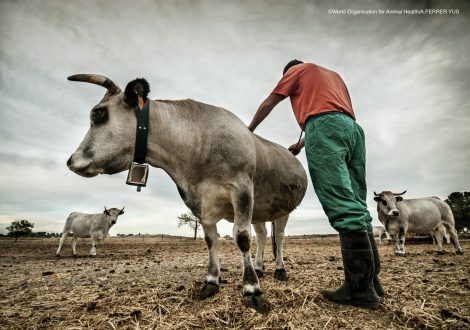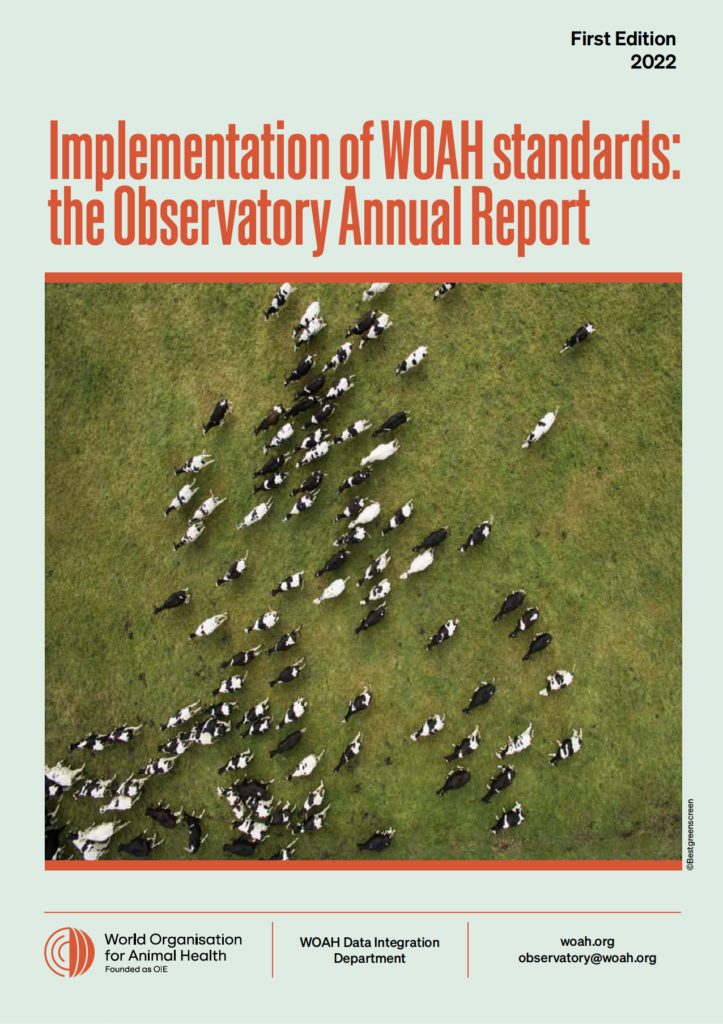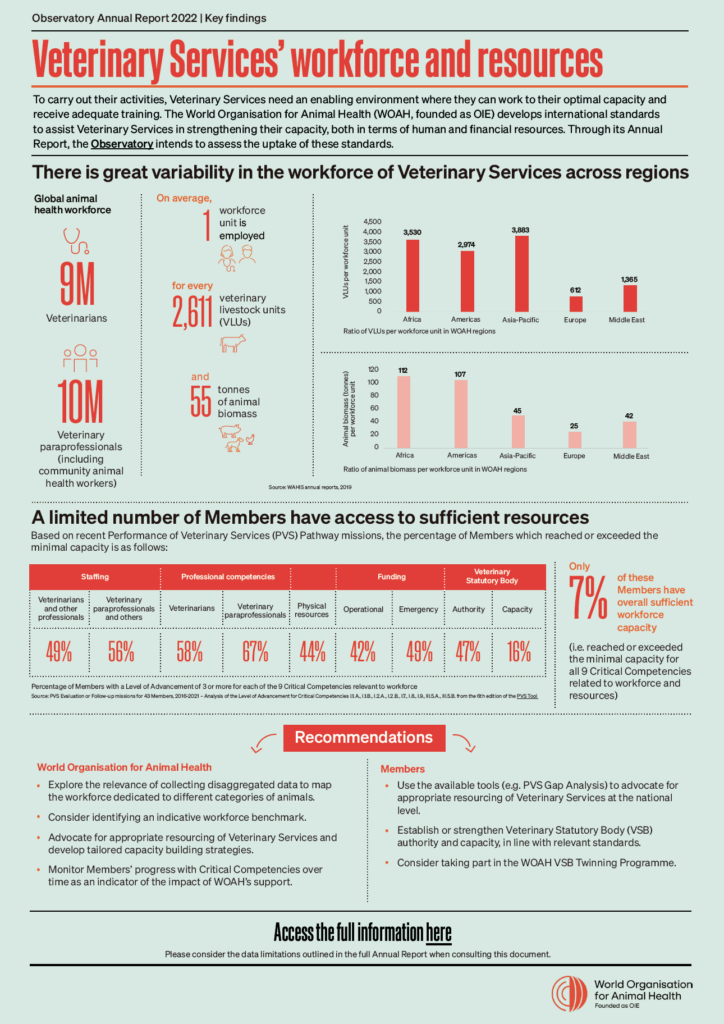Monitoring workforce and resources
To carry out their activities, Veterinary Services need an enabling environment where they can work to their optimal capacity and receive adequate training. The World Organisation for Animal Health (WOAH, founded as OIE) develops international standards to assist Veterinary Services in strengthening their capacity, both in terms of human and financial resources. Monitoring workforce and resources can bring valuable insights for both WOAH and WOAH Members.

Through its Annual Report, the Observatory presents a global overview of the level of uptake of WOAH standards that relate to Veterinary Services’ workforce and resources.
How can you access our workforce and resources related analysis?
The workforce and resources related dashboard presents the results of the analysis in an interactive way.
Errata: Errors in the original calculations of the numbers of total veterinarians, total veterinary paraprofessionals, workforce and VLUs have been corrected in this dashboard. As a result, the numbers reported in the updated dashboard are significantly lower than the numbers that were reported in the initially published dashboard in 2022. Please note that the errors in the report and the factsheet of 2022 have not been corrected.
To discover the results of our workforce and resources related analysis, access the full report as well as the one-page executive summary.
How did we monitor the implementation of standards related to workforce and resources?
Monitoring the implementation of standards related to Veterinary Services’ workforce and resources requires building and analysing indicators using various data sources.
What workforce and resources indicators did we use to monitor the implementation of these standards?
Several indicators made it possible to monitor the implementation of standards related to Veterinary Services’ workforce and resources, among them:
Total number of veterinarians
Total number of veterinary paraprofessionals (including community animal health workers)
Ratio of workforce reported against Veterinary Livestock Units
Ratio of workforce reported against animal biomass
Performance of Veterinary Services regarding workforce and other resources, as assessed by the PVS Tool:
– Percentage of Members that have been assessed with a Level of Advancement of 3 or more for each of the nine PVS Critical Competencies directly relevant to workforce (I-1.A Professional and technical staffing of the Veterinary Services – Veterinary and other professionals (university qualified); I-1.B: Professional and technical staffing of the Veterinary Services – Veterinary paraprofessionals; I-2.A Competency and education of veterinarians and veterinary paraprofessionals – Veterinarians; I-2.B: Competency and education of veterinarians and veterinary paraprofessionals – Veterinary paraprofessionals; I-7: Physical resources and capital investment; I-8: Operational funding; I-9: Emergency funding; III-5.A: Veterinary Statutory Body Authority; III-5.B: Veterinary Statutory Body Capacity)
– Percentage of Members that have been assessed with a Level of Advancement of 3 or more for ALL the nine PVS Critical Competencies directly relevant to workforce (I-1A&B, I-2 A&B, I-7, I-8, I-9, III-5A&B)
What data sources did we use to build workforce and resources indicators?
Five main data sources made it possible to build the monitoring indicators:
Number of veterinarians/veterinary paraprofessionals and veterinary livestock units: data extracted from the 2019 WAHIS annual reports submitted by Members
Animal biomass: data extracted from the database developed by the WOAH Antimicrobial Resistance and Veterinary Products Department. The biomass of terrestrial animals (excluding bees, dogs and cats) was considered. This report used the 2019 estimation
Countries’ income level: World Bank country classifications by income level: 2021–2022, extracted on 4 May 2022 from http://databank.worldbank.org/data/download/site-content/CLASS.xlsx
Countries’/territories’ agriculture, forestry and fishing value added (as % of GDP) for 2020: World Bank national accounts data and Organisation for Economic Co-operation and Development (OECD) National Accounts data files, extracted on 4 May 2022 from worldbank.org
Performance of Veterinary Services on workforce and resources: PVS dataset, as compiled and provided by the WOAH Capacity Building Department (2016-2021)
More on the topic
-
Observatory
The Observatory is a transversal programme that provides an overview of the uptake of international standards on animal health and welfare and veterinary public health by our Members. It contributes to the progressive improvement of their implementation as well as to the constant assessment of our corporate initiatives by providing valuable feedback and recommendations.Discover -
Improving Veterinary Services
Animals and the health systems which ensure their protection, play a vital role in the security, and the economic and social wellbeing of humanity. Beyond income generation, food security and nutrition, animals are a valuable asset to the rural poor, serving as a store of wealth, collateral for credit and an essential safety net during times of crisis.Discover


